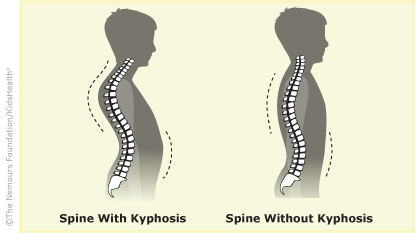- Home
- Parents Home
- Allergy Center
- Asthma Center
- Cancer Center
- Diabetes Center
- A to Z Dictionary
- Emotions & Behavior
- First Aid & Safety
- Food Allergy Center
- General Health
- Growth & Development
- Flu Center
- Heart Health
- Homework Help Center
- Infections
- Diseases & Conditions
- Nutrition & Fitness Center
- Play & Learn Center
- School & Family Life
- Pregnancy Center
- Newborn Center
- Q&A
- Recipes
- Sports Medicine Center
- Doctors & Hospitals
- Videos
- Para Padres
- Home
- Kids Home
- Asthma Center
- Cancer Center
- Movies & More
- Diabetes Center
- Getting Help
- Feelings
- Puberty & Growing Up
- Health Problems of Grown-Ups
- Health Problems
- Homework Center
- How the Body Works
- Illnesses & Injuries
- Nutrition & Fitness Center
- Recipes & Cooking
- Staying Healthy
- Stay Safe Center
- Relax & Unwind Center
- Q&A
- Heart Center
- Videos
- Staying Safe
- Kids' Medical Dictionary
- Para Niños
- Home
- Teens Home
- Asthma Center
- Be Your Best Self Center
- Cancer Center
- Diabetes Center
- Diseases & Conditions
- Drugs & Alcohol
- Expert Answers (Q&A)
- Flu Center
- Homework Help Center
- Infections
- Managing Your Medical Care
- Managing Your Weight
- Nutrition & Fitness Center
- Recipes
- Safety & First Aid
- School & Work
- Sexual Health
- Sports Center
- Stress & Coping Center
- Videos
- Your Body
- Your Mind
- Para Adolescentes
Kyphosis
What Is Kyphosis?
Kyphosis (kye-FOH-sis) makes a person's spine rounded so the back looks hunched over. Everyone has some rounding of the spine. But a larger rounding than normal can cause health problems like pain and breathing trouble.
Doctors sometimes treat kyphosis with back braces and physical therapy. A larger curve might need surgery.

What Happens in Kyphosis?
The spine is called “the backbone” but it's not just one bone. It's made of lots of small bones (called ) that are stacked and connected by a type of elastic tissue called cartilage. This gives us the flexibility to bend, stretch, balance, and walk.
The stacked vertebrae are slight rounded, making the upper back curve out a little bit. When the curve is larger than normal, it's called kyphosis.
Kyphosis also can happen in the neck. This is called cervical kyphosis.
What Are the Types of Kyphosis?
The different types of kyphosis in the back are:
Congenital kyphosis: A problem with how the vertebrae developed before birth causes this type of kyphosis. It is more noticeable as a child grows.
- Read more about congenital kyphosis.
Postural kyphosis: This is the most common kind of kyphosis. Kids who slouch over a lot (have "bad" posture) can develop a rounded back.
- Read more about postural kyphosis.
Scheuermann's kyphosis: Viewed from the side, vertebrae look like stacked rectangles. In Scheuermann's kyphosis, the vertebrae are triangles, or wedge shaped. This makes the spine hunch forward.
- Read more about Scheuermann's kyphosis.
- Cervical Kyphosis
- Congenital Kyphosis
- Postural Kyphosis
- Cerebral Palsy (CP) (Topic Center)
- Scheuermann's Kyphosis
- Spinal Fusion Surgery
- X-Ray Exam: Cervical Spine
- Magnetic Resonance Imaging (MRI): Lumbar Spine
- Kyphosis Factsheet (for Schools)
- The Schroth Method of Physical Therapy
- Halo-Gravity Traction

© 1995- The Nemours Foundation. KidsHealth® is a registered trademark of The Nemours Foundation. All rights reserved.
Images sourced by The Nemours Foundation and Getty Images.